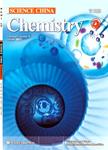Affinity-guided protein conjugation: the trilogy of covalent protein labeling, assembly and inhibition
Affinity-guided protein conjugation: the trilogy of covalent protein labeling, assembly and inhibition作者机构:Center of Novel Biomaterials Department of Chemistry Chinese University of Hong Kong
出 版 物:《Science China Chemistry》 (中国科学(化学英文版))
年 卷 期:2016年第59卷第7期
页 面:853-861页
核心收录:
学科分类:0710[理学-生物学] 071010[理学-生物化学与分子生物学] 081704[工学-应用化学] 07[理学] 08[工学] 0817[工学-化学工程与技术] 0703[理学-化学]
基 金:supported by the University Grants Committee of Hong Kong (ECS grant CUHK 404812 GRF grants 403711 and 404413 and Ao E/M-09/12)
主 题:peptide-peptide interaction covalent labeling bioconjugation reaction protein assembly inhibitor signal transduction affinity-guided reaction
摘 要:Specific and dynamic biological interactions pave the blueprint of signal networks in cell. For example, a great variety of specific protein-ligand interactions define how intracellular signals flow. Taking advantage of the specificity of these interactions, we postulate an affinity-guided covalent conjugation strategy to lock binding ligands through covalent reactions between the ligand and the receptor protein. The presence of a nucleophile close to the ligand binding site of a protein is sine qua none of this reaction. Specific noncovalent interaction of a ligand derivative(which contains an electrophile at a designed position) to the ligand binding site of the protein brings the electrophile to the close proximity of the nucleophile. Subsequently, a conjugation reaction spontaneously takes place between the nucleophile and the electrophile, and leads to an intermolecular covalent linkage. This strategy was first showcased in coiled coil peptides which include a cysteine mutation at a selected position. The short peptide sequence was used for covalent labeling of cell surface receptors. The same strategy was then used to guide the design of a set of protein Lego bricks for covalent assembly of protein complexes of unnatural geometry. We finally made reactive peptides for natural adaptor proteins that play significant roles in signal transduction. The peptides were designed to react with a single domain of the multidomain adaptor protein, delivered into the cytosol of neurons, and re-directed the intracellular signal of neuronal migration. The trilogy of protein labeling, assembly, and inhibition of intracellular signals, all through a specific covalent bond, fully demonstrated the generality and versatility of affinity-guided covalent conjugation in various applications.



